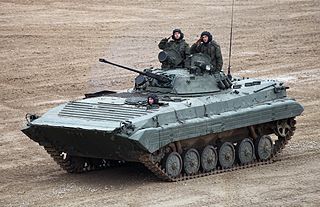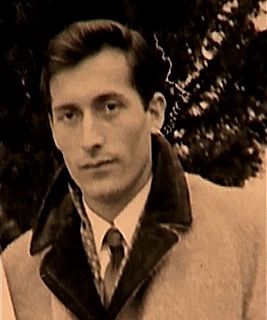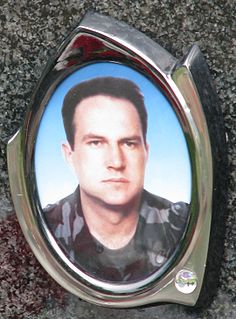
The T-72 is a family of Soviet/Russian main battle tanks that entered production in 1969. The T-72 was a development of the T-64, which was troubled by high costs and its reliance on immature developmental technology. About 25,000 T-72 tanks have been built, and refurbishment has enabled many to remain in service for decades. It was widely exported and saw service in 40 countries and in numerous conflicts. The T-90 introduced in 1992 is a development of the T-72B, production and development of the T-72 continues today.

The T-54 and T-55 tanks are a series of Soviet main battle tanks introduced in the years following the Second World War. The first T-54 prototype was completed at Nizhny Tagil by the end of 1945. From the late 1950s, the T-54 eventually became the main tank for armoured units of the Soviet Army, armies of the Warsaw Pact countries, and many others. T-54s and T-55s have been involved in many of the world's armed conflicts since their introduction in the last half of the 20th century.

The BMP-2 is a second-generation, amphibious infantry fighting vehicle introduced in the 1980s in the Soviet Union, following on from the BMP-1 of the 1960s.

The PT-76 is a Soviet amphibious light tank that was introduced in the early 1950s and soon became the standard reconnaissance tank of the Soviet Army and the other Warsaw Pact armed forces. It was widely exported to other friendly states, like India, Iraq, Syria, North Korea and North Vietnam.

The Western Bloc, also known as the Free Bloc, the Capitalist Bloc, and the American Bloc, was a coalition of countries that were officially allied with the United States during the Cold War of 1947–1991. It was spearheaded by the member states of NATO, but also included countries that advocated anti-communism and anti-socialism, and likewise were opposed to the Soviet Union and the Warsaw Pact. The term was used to distinguish this anti-Soviet grouping from its pro-Soviet counterpart: the Eastern Bloc. Throughout the protracted period marked by Soviet–American tensions, the governments and the press of the Western Bloc were more inclined to refer to themselves as the Free World or the First World, whereas the Eastern Bloc was often referred to as the "Communist World" or more formally as the "Second World".

The Croatian Army and Croatian Ground Army is the largest and most significant component of the Croatian Armed Forces (CAF).

The M-84 is a Yugoslav third generation main battle tank, a variant of the Soviet T-72. The M-84 is still in service in Croatia, Kuwait, Serbia, Slovenia and Bosnia and Herzegovina.

The NSV, also known as the «Utyos», is a 12.7mm caliber heavy machine gun of Soviet origin, named after the designers, G. I. Nikitin, Y. S. Sokolov and V. I. Volkov. It was designed to replace the DShK machine gun and was adopted by the Soviet Army in 1971. It is no longer being produced in Russia; the manufacturing license for the NSV ended up in Kazakhstan after the break-up of the Soviet Union. The NSV has been manufactured in Bulgaria, India, Poland and Yugoslavia under license.

Blago Zadro was a commander of the northern part of Croatian forces in Vukovar during the Croatian War of Independence. He was killed in an attack by the Yugoslav People's Army (JNA) in the town of Borovo Naselje.

Marko Babić was a Croatian Army officer who served during the Croatian War of Independence. He is most notable for his contribution during the Battle of Vukovar, where he led the defence of Trpinjska Cesta.

Croatia–Ukraine relations are foreign relations between Croatia and Ukraine. The countries established diplomatic relations on 18 February 1992. Croatia has an embassy in Kyiv and an honorary consulate in Donetsk. Ukraine has an embassy in Zagreb and honorary consulates in Malinska and Split.











